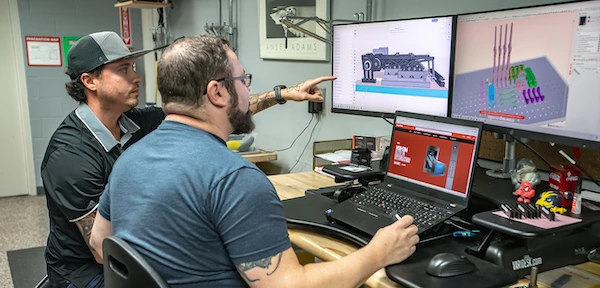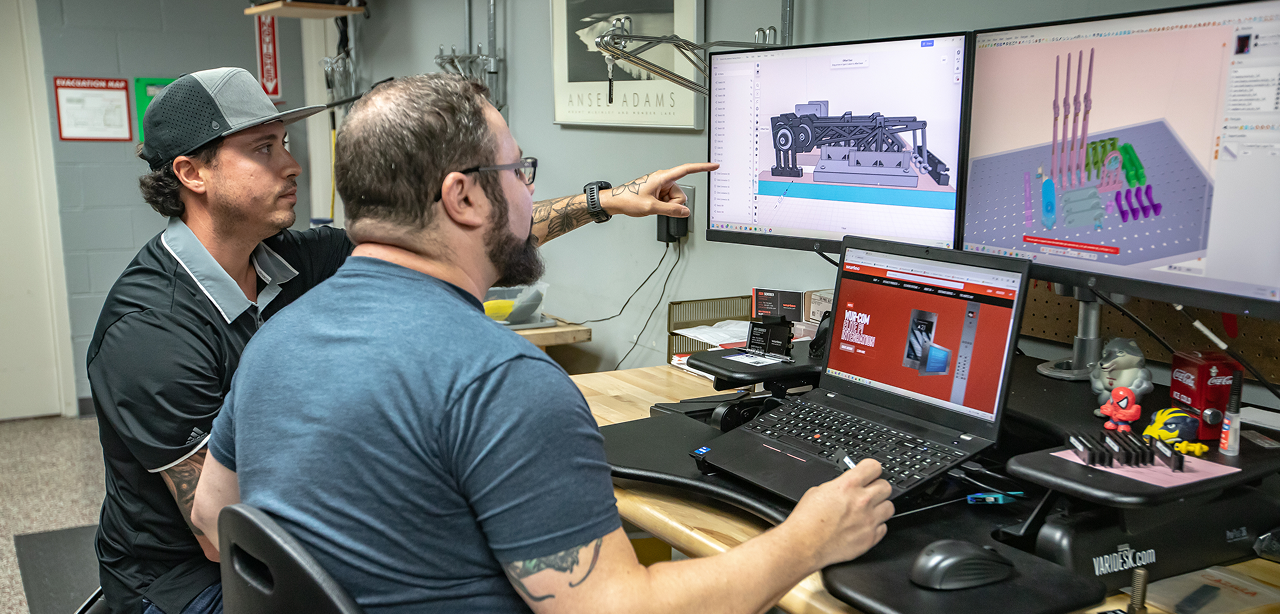Designing 250% faster. How Percy Lau redefines eyewear fashion norms

Overview
Eyewear design meets technical capability and creative innovation. For designers looking to push boundaries, execution in both realms is needed to turn ideas into reality. Not too recently, there was a void of tools suited for the 3D concepting and on-the-go work of a designer. But now a mobile workflow and instinctive 3D design rooted in an adaptive user interface make both possible. Enter the Apple ecosystem coupled with Shapr3D. Find out how one innovative designer leveraged the duo to break through design norms.

About Percy
Shanghai-based eyewear brand designer, Percy Lau, defines the cornerstones of innovative eyewear. As a budding designer fresh out of graduating from Central Saint Martins, she launched her brand from her home base in Hong Kong in 2013. Only a short while later, her career got a jumpstart when her talent garnered international recognition. Percy was the youngest recipient of the International Talent Support YKK in 2013, fueling the start of her brand.

Now her team of seven includes design, administration, marketing, and prototyping. While Percy carries out the bulk of the design with initial sketches and product execution, other designers on her team help finalize finishing elements such as the eyewear hinge and nosepad. For manufacturing, Percy turns to a local external partner.

Preparing to take products to market comes with an additional 1-2 months to finalize products and build up inventory. With her products high in demand, Percy accepts pre-orders from clients. Typically, the team produces 5-6 collections at a time consisting of 500 pairs each, and 3 collections launched per season. Summer collections consist primarily of sunglasses while winter brings Percy’s opticals to the fashion scene.
Why Shapr3D
Percy’s journey into Shapr3D is closely tied to the development of the Apple ecosystem. Once Apple debuted the iPad Pro, it didn’t take long for her to become an avid user. She started off using Procreate to breathe digital life into her ideas. With her excitement brimming over into periodically checking the Apple store for new design software, she soon stumbled upon Shapr3D. In the same timespan, she came across a tutorial for Shapr3D on Bilibili. Percy was curious.
Though Percy’s creativity was closely bound to sketching by hand with pencil on paper, she became intrigued by the idea of designing in 3D the same way as on paper. She tried various other CAD and Rhino, before settling on Shapr3D. Her ventures into drafting with Apple Pencil and Shapr3D on iPad Pro over her typical pencil and paper gave her freedom to design at the same speed of her vision: much faster and more accurately than on paper.

“The tutorial was key,” Percy notes. When she first launched the app, Percy was welcomed by the introductory tutorial available to Shapr3D newcomers. The guidance gave her the comfort she needed to move forward in learning Shapr3D. And she was floored by the results: the process of picking up CAD took just two hours. In her previous experience, she hadn’t learned nearly that quickly. “Other CAD took me a month to learn and I still didn’t feel comfortable.” With Shapr3D, she kicked off her 3D designing immersion by modeling three projects in the first week.
“I realized that Shapr3D would change my design process for good.”
Since those first steps with Shapr3D, Percy and two other designers now collaborate more closely combining the CAD tool and Procreate. The boost lets them concept designs quickly and present them in a way that is understandable for the design team and prototyping and manufacturing.
Challenges
- Traditional sketches and clunky 3D modeling interfaces make concepting accurately difficult and time-consuming
- Conveying designs for manufacturing creates confusion
- Inability to showcase technical knowledge slows down product approval
Solutions
- Instinctively sketching ideas on iPad allows for quick and accurate concepting
- Multidevice helps prove manufacturing-ready ideas at factory to speed up production
- Showcasing Visualized models in AR boosts professional standing for fast approvals
Concepting designs faster
Before turning to Shapr3D, Percy typically spent two days non-stop sketching with pencil and paper to concept ideas. Then turning concepts into full-fledged designs was even more rigorous. The design process entailed making exact measurements with rulers and drawing on transparent paper to show the structure, inside section, and finishing colors, layer by layer. After a week of sketching out concepts, it then took two months to create prototypes by hand.

Trying to concept with other CAD was no better - just slower. This made sketching the more viable option to get ideas onto paper and realize them.
“Finalizing an eyewear design is now 10x more efficient. Instead of spending 20 hours on the finalization process and testing materials, now it takes about 2 hours. Shapr3D is the singularity.”
Now, Percy can concept her ideas directly in 3D. One design in Shapr3D takes her about two hours. This means the team goes through the design process a whopping 250% faster, bringing them up to speed fast to handpick collections with clarity and confidence.
Showing designs in AR speeds up client approval
With a faster and more effective internal process firmly established, Percy gained more time and flexibility for collaborations. Establishing trust with external clients as a designer takes many levels of displaying professionalism. Though she’s sought after as a consultant, Percy still found getting approval from clients could take up to two months. This changed when Percy started walking into meetings with iPad in arm.

Conversations around designs morphed into visual presentations. Percy simply snaps open her iPad to pull up Shapr3D and showcase the product in question in Visualization. Even more effective is when Percy uses AR to place a design into the client’s physical space - either on a table or directly onto the client’s face. All questions go answered and the vital components of conversations are singled out to problem-solve what truly matters. Clients can understand the designs completely and give feedback immediately.

Clients also don’t need to worry about whether the designs are manufacturable. With the final designs displayed in real space and scale around them, plus the quick 2D Drawings Percy can open, no room is left for doubt. Showing the clients that the designs are ready makes finalization smooth and quick. Percy draws a sigh of relief as she notes, “It’s energy-saving for them and for me.”
Aligning with manufacturing is simple and straightforward
When Percy presents her designs as manufacturable, she has every accuracy point checked off. Though her designs are out of the ordinary, she has hit a tempo with her external manufacturing team in giving life to her designs. This wasn’t always the case.
Previously, trying to convince manufacturers to carry out Percy’s designs was tricky. They weren’t easily convinced it was possible and trying to communicate how to execute designs took a lot of effort.

“Most of the time they say, ‘Oh your design is so crazy. It’s not going to happen.”
This is what Percy had to battle and where Shapr3D now comes in for quick wins. Percy shows the designs directly to the factory manager on the shop floor to connect them with her vision. While Percy’s creative mind lives in visualizing her design, her manufacturer needs to see it from multiple angles to confirm that manufacturing is possible. Quick toggling between 3D modeling, Visualized model, and 2D Drawings gives several avenues for discussing the design in everyone’s visual language.
“Once I finish the design, I'll bring my iPad and show it to the factory manager because she doesn't know technically how to transform my crazy ideas into down-to-earth products. And I'll just switch to the Visualization version and say, ‘I want this part to be done like that.”

Doubt turns into confidence as the factory manager understands the design in its entirety from the basic structure down to the nose pads and hinges.
iPad and Pencil in tow with Augmented Reality to power creations: harnessing the Apple ecosystem is a vital foundation. And Shapr3D is the mechanism for turning innovative ideas into a possibility - a possibility that avid Percy brand wearers around the globe incorporate into their daily lives. ‘Maybe crazy is possible’ is the message wearers transmit into their daily lives.









